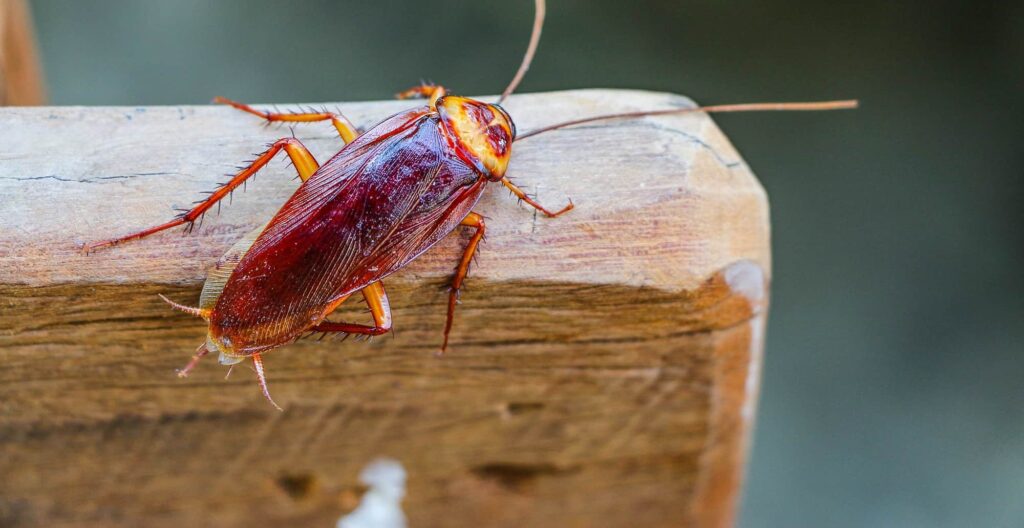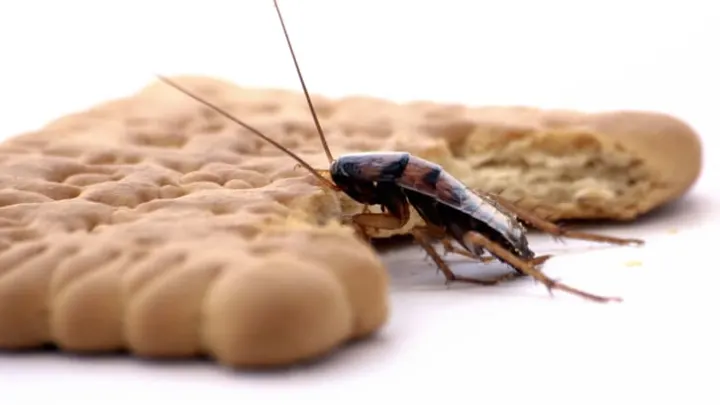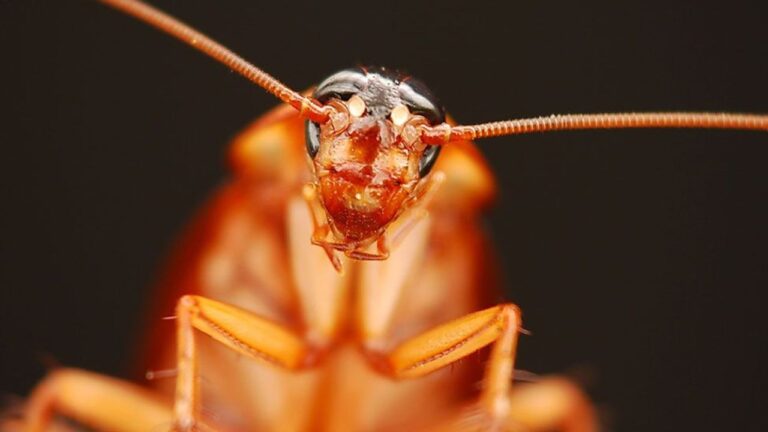Cockroaches, in general, don’t experience fear in the same way humans or other mammals do because they lack the same cognitive and emotional capacity. Their behaviors are more instinctual and geared towards survival.
However, they do exhibit avoidance behaviors when sensing danger or threats, including human presence. Cockroaches tend to flee when they detect vibrations, sudden movements, or changes in light that signal potential danger. This behavior isn’t driven by fear but by their natural instinct to seek shelter and safety.
Ultimately, while cockroaches might exhibit avoidance behaviors when humans are around, it’s not accurate to say they experience fear in the same way humans do. They are primarily motivated by their survival instincts and their tendency to avoid potential threats or disturbances in their environment.
What Defines Roach Behavior?

Roaches are highly adaptable insects known for their resilient behavior and ability to survive in various environments. Several factors define roach behavior:
Nocturnal Nature
Roaches are primarily nocturnal, preferring to be active in the dark. They tend to hide during the day and forage for food and water at night.
Scavenging Behavior
They are scavengers and will feed on almost anything organic, including food crumbs, garbage, paper, and even other dead insects.
Agile and Quick Movement
Roaches are agile insects capable of quick movements. They can move swiftly and maneuver through small spaces, making them difficult to catch.
Preference for Warm and Moist Environments
Roaches thrive in warm, humid environments. They seek shelter in places with access to water and warmth, such as kitchens, bathrooms, basements, and areas with plumbing.
Reproduction Rate
Roaches reproduce rapidly. A single female cockroach can lay many eggs, and they mature relatively quickly, leading to fast population growth.
Adaptability and Resilience
Roaches are incredibly resilient and can survive in harsh conditions. They can endure starvation, extreme temperatures, and even radiation exposure.
Chemical Communication
Roaches use chemical signals known as pheromones to communicate with each other. These pheromones help in finding food sources, signaling danger, and locating potential mates.
Hiding Behavior
Roaches tend to hide in cracks, crevices, and dark, secluded areas during the day. They feel safer when they have a surface against their backs and with access to nearby hiding places.
Social Behavior
Some roach species display social behavior, living in groups or colonies where they interact and share resources. However, many species are more solitary.
Feeding Patterns
Roaches are omnivorous and opportunistic feeders. They can survive on a wide range of food sources and can go for long periods without food if necessary.
Understanding these behavioral traits can be helpful in controlling and managing roach infestations by targeting their preferred habitats and food sources.
How Do Roaches React to Human Presence?
Roaches typically display specific reactions and behaviors in response to human presence, which can vary based on factors like the species of roach, the environment, and the level of infestation. Here are some general ways roaches might react to human presence:
Scattering and Hiding
When they sense human presence, roaches often scatter and try to hide in cracks, crevices, or dark areas. They have a natural instinct to avoid potential threats, and humans are perceived as a threat to their safety.
Freezing or Playing Dead
Some roaches might freeze in place or play dead when they feel threatened. This behavior is an attempt to avoid detection or deter predators.
Quick Escape
Roaches are fast and agile insects. They might quickly run away to find a hiding spot when they detect movement or disturbance caused by humans.
Increased Agitation
In response to disturbances or perceived threats, roaches might exhibit increased activity or agitation. They may run around erratically or seem more frenzied.
Attraction to Food Sources
If humans are present and food is accessible, roaches might be more active around these areas, as they are attracted to food remnants and sources of moisture.
Chemical Communication Changes
Roaches use chemical signals to communicate. Human presence might affect their chemical signaling, causing them to emit alarm pheromones or signals to warn others of potential danger.
What Separates Roach Instincts from Human Fear Responses?

Roach instincts and human fear responses are fundamentally different in terms of their underlying mechanisms, purpose, and manifestation:
Instinct vs. Emotion
Roach instincts are innate, automatic behavioral responses that have evolved over time to ensure survival. These instincts are hardwired in their neural circuitry and are triggered by specific stimuli, such as the presence of predators or threats. Human fear responses, on the other hand, involve complex emotions and cognitive processes.
Fear in humans is a multifaceted emotional and psychological reaction to perceived threats, involving conscious experiences and higher brain functions.
Evolutionary Basis
Roach instincts, including fleeing from predators or seeking shelter, are shaped by evolutionary pressures over generations. These instincts are primarily focused on immediate survival and propagation of the species.
Human fear responses also have evolutionary roots, but they involve a broader range of cognitive and emotional processes, often encompassing anticipation, reasoning, and learning from past experiences.
Neurological and Physiological Differences
Roaches have simpler nervous systems compared to humans. Their responses to threats are primarily driven by basic neural mechanisms that trigger reflexive behaviors. In contrast, human fear responses involve a complex interplay of various brain regions, neurotransmitters, and hormonal changes that orchestrate emotional and physical reactions.
Social and Psychological Factors
Humans experience fear not only as a response to immediate threats but also due to psychological factors like learned behaviors, cultural influences, and social contexts. Fear in humans can be influenced by memory, imagination, and anticipation of future dangers, whereas roach instincts are more immediate and reactive to present stimuli.
Adaptability and Consciousness
Roach instincts are highly specialized and focused on immediate survival needs, lacking consciousness or awareness in the way humans experience fear. Human fear responses are adaptable and can be modulated through cognitive processes, including reasoning, learning, and exposure therapy.
In summary, while both roach instincts and human fear responses are mechanisms aimed at ensuring survival, they differ significantly in their underlying mechanisms, complexity, conscious experience, and adaptability.
Roach instincts are primarily automatic, immediate, and instinctual, while human fear responses are multifaceted, cognitive-emotional processes influenced by various factors beyond immediate survival.
FAQ’s
What is a cockroach’s biggest weakness?
Cockroaches’ susceptibility lies in their need for moisture and vulnerability to certain pesticides.
Why are roaches so scary?
Roaches often evoke fear due to their fast movements, association with filth, and their ability to thrive in various environments.
What do cockroaches hate?
Cockroaches strongly dislike strong scents like peppermint, bay leaves, and certain essential oils. They also avoid bright lights and sudden movements.
Can cockroaches sense fear?
Cockroaches lack the ability to sense human emotions like fear. Instead, they respond instinctively to environmental cues that signal danger.
Do cockroaches like to be touched?
Cockroaches do not seek or enjoy human touch. They tend to avoid contact with humans and prefer dark, secluded areas.
Are cockroaches shy?
Cockroaches exhibit avoidance behaviors rather than shyness. They tend to flee and hide when sensing potential threats or disturbances in their environment.
Final Words
Roaches act on instincts rather than feelings like humans. They move away from vibrations and sudden changes to find safety, but they don’t feel fear the same way we do. While humans react emotionally to fear, roaches respond instinctually to survive.
Understanding these differences helps us see that roaches avoid us not because they’re scared, but because it’s their natural way of staying safe.

